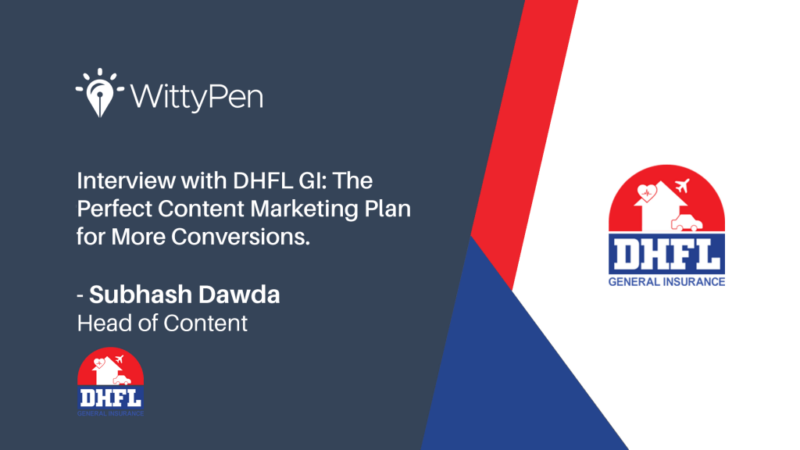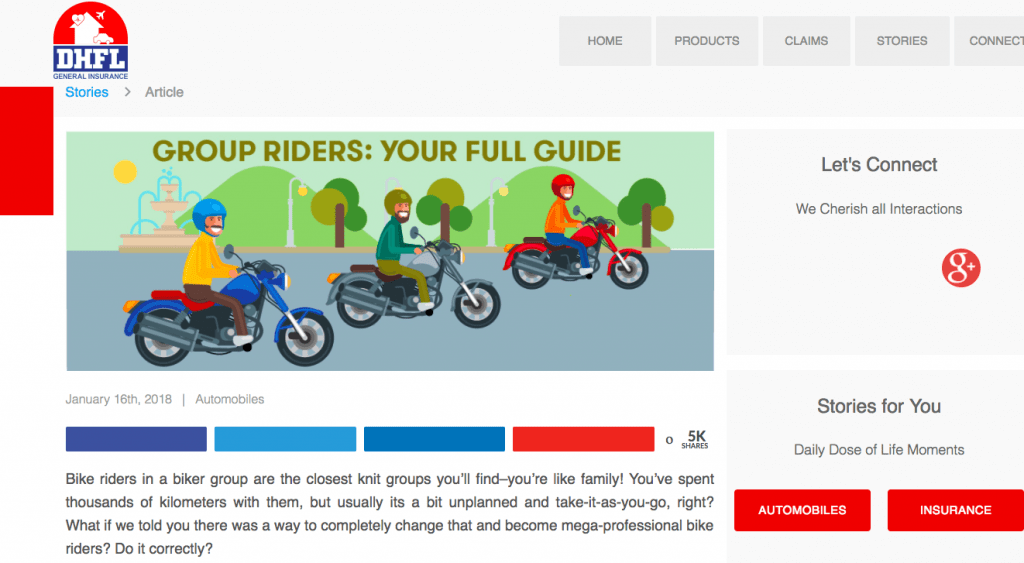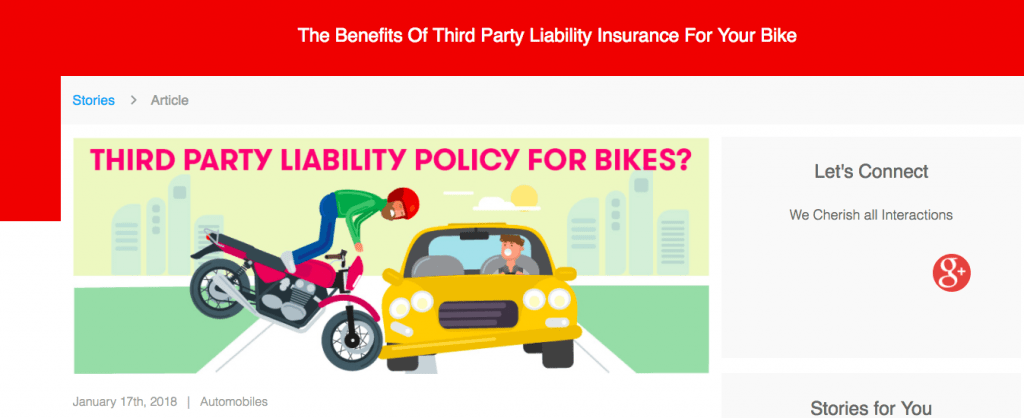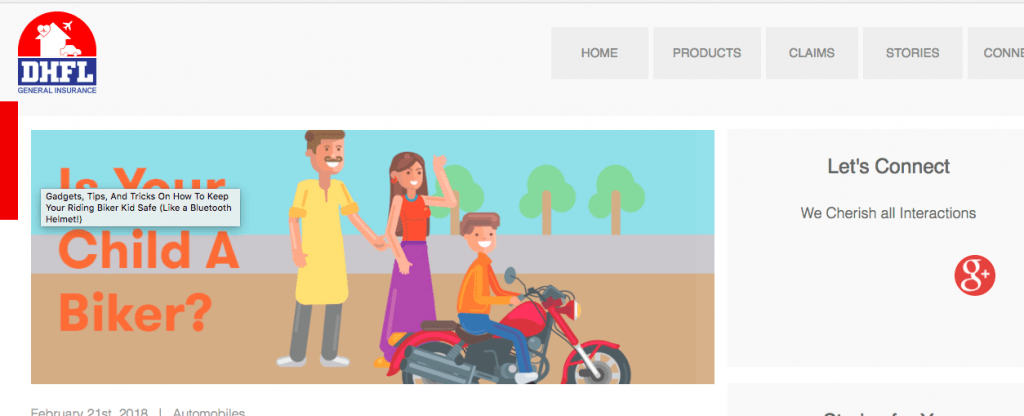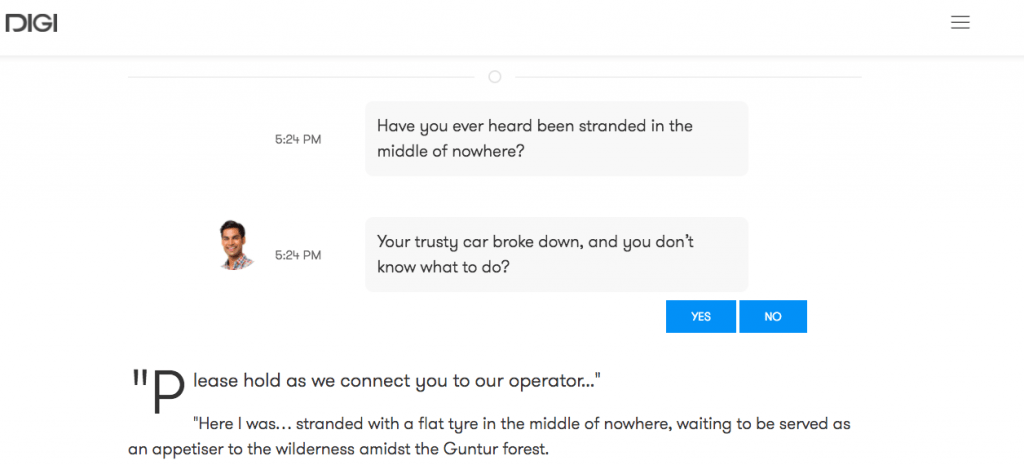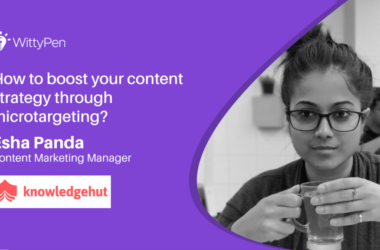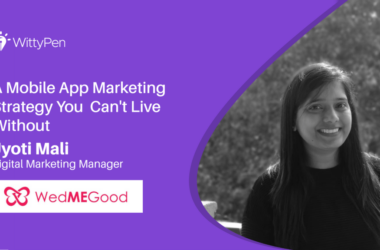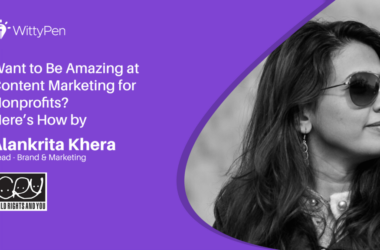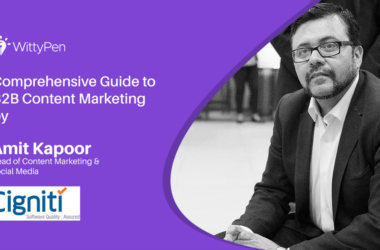Last updated on October 13th, 2023
Content is the backbone of any brand that is out there. Without the right content, a brand may get crippled and can fall down. So it is important to have a well-researched and a well-documented content marketing plan that complements the ideology of your brand.
To reinforce the importance of content, we asked one of our industry experts, Subhash Dawda, head of content at DHFL General Insurance some questions about succesful content marketing. But, before we proceed to that part, we would like you to know a little about Subhash.
About Subhash
Subhash started writing at the age of 16 years. He loved writing since he was young, and slowly converted his passion into his profession. He freelanced for long, with some of the most prominent brands such as One Plus and Gillette. He credits these brands for giving him a lot of exposure to the world of content. Post his MBA, he worked with TheBagTalk, who he had also freelanced with earlier. Together they produced some amazing content.
Presently, Subhash takes care of the content strategy at DHFL general insurance.
He says that ” Content is the centrepiece of what we do here”.
Content is a part of thought leadership, inbound marketing, SEO, audience building and segmentation. Audience engagement and segmentation are the most crucial aspects for us.
Targeting audiences purely on customization is our key. Warm, hot or cold leads, people who know something, a lot or nothing about what we stand for, we target them all in different ways.”
The question-answer round 🙂
So, we had a lot of questions in our mind, and we shot them all one by one. Our first question was,
Why is content so important to you?
Subhash’s take on this,
“Content is the king, and it might be the pauper in cases where it is misused”
Brands today, a lot of them focus on “Selling”. People, your users don’t like that. We at DHFL GI, believe in caring for our audiences, by making content that reaches out to a larger set of people, helping them in ways that may not be directly related to selling insurance. We want to make our communication helpful and make them understand that we are not there only at the time of sale, but we are there throughout their customer journey.
It becomes quite challenging for a company like ours where we encounter our customers once or maybe twice a year. So, the plan is to stick on for longer without shooing away our audience through “flashy” sale slogans.
Our communication is focused on “We care”.
Not only post sales but at the beginning, in the middle and every other time, we project ourselves as the “people who care for you”.
We focus on the four lines of business – health, motor, travel and home. Our content marketing program focuses on how can we help our users to stay better at all of these, like how can our users travel better or how can they ride better?
For instance, our blog on “how to take care of your hair while you ride, or what are the group formations you should follow while you ride together with rider friends?”, focuses on aspects beyond insurance. We are trying to think like a rider does, and we do it because we do not want to give the usual “insurance dope” to our users, that other brands may offer.
Here is a screenshot of their blog on Group Riders: Your Full Guide.
We at WittyPen personally think that this is a great step taken by Subhash and his team. This is customization done right. Through blogs like these, the team at DHFL GI understands the pain points/concerns of their audience. And tries to solve them, rather than just sell what they have. This is what makes them one of the best insurance companies in India.
They have some other interesting blogs as well. For example, they have written about “How To Manage Pain While Biking”?, Tips On Using The Best Helmet, Traffic Fines That You Could Potentially Face and may more.
You can check them out here.
Subhash further adds,
Every insurance brand out there has hundreds of blogs that just list the products, their features and that’s that. We here are focusing on identifying needs and educating them further on it. When you look at a third-party liability blog, it tells you about the product—as well as explains whether it’s the correct insurance for you or not. So your decision is much easier.
When we further asked about the major platforms that they use for promoting and sharing content, Subhash said,
Our aim is to have maximum interaction happen on our website, and we want our users there to be engaged and take actions. Social media is used to proliferate the content ahead, and ultimately land them on our website.
We evaluate our next course of action based on how our users are responding to the content we serve. Our websites will soon open newer vistas, such as infographics, varied story-based landing pages, videos, etc and then we will have many more ways of making them stay for longer on our platform.
His answer to “What are your core priorities in terms of content?”
Getting free traffic through SEO. Making our audiences our hero. Helping them get the most through what we offer. And finally, break the walls that conventional insurance companies have built.
Challenges in content marketing
We know that creating content comes with a lot of challenges. We even wrote a blog about it 🙂
Now DHFL GI is an insurance company, a finance company to its core. And, usually, for finance companies, it is very difficult to establish trust in the minds of users.
When we asked the same question to Subhash, he responded by saying,
As far as trust-building is concerned, we didn’t have to worry about that much. We have had our group brand “DHFL Home Loans” and their ambassador Shahrukh Khan to create that element of brand recall and trust”
But the part about engaging people with finance, and especially insurance is a tough nut to crack. This is where our main challenge lies.
To get people buy online is not easy. Ours is a low engagement product and has a longer process. Not many times do people consider it. Hence, there is a continuous battle for traffic.
Even though India’s got some of the cheapest insurance globally, insurance is still a push and not pull market.
Our purpose is to make insurance more exciting for our users to consume. So, we take a better route, where we make people understand that it is not about bundled insurance or more profitable insurance. It is about what is the right fit for you.
We educate them and build a story around products that are not easily sellable.
We also think that, that any content strategy should have a healthy blend of paid and organic marketing. Facebook algorithms pay lesser attention to organic posts these days, so it is pretty important to have a paid strategy well integrated with your organic strategy for a wider reach.
His take on the target audience,
Content creation depends completely on who you are targeting. There is no one TG that we are targeting. Sometimes we talk to parents, and sometimes the young millennials who ride bikes. Our tonality and language changes while we address the different segments.
Women are a key influencer group for core purchasing TGs. So, for example, from a health insurance perspective, women as caregivers play a major role in influencing the decision-making process.
Another example of an influencer group is parents, parents are very concerned about their children’s’ safety while they ride. So, we have a blog addressed to them, that talks about the gears that their children should have when they ride.
When asked, Are tools important? His response was,
Tools are, of course very important. The biggest brands with great content strategy track every single customer movement.
But tools are not the only criteria that you should be looking at. There are deeper metrics that you should be focusing on.
Do you think that the biggest of brands out there would have been focusing on tools when they just started out?
No. In their nascent stage, they would have just started out with a basic website, where the focus would be only on CONTENT.
For any field that you want to specialize in, knowing the fundamentals first is important. So start small and create content that resonates with your audience’s mindset.
What will you do with tools, when you don’t have data to analyze?
First, bring in that audience, get your graph of traffic up, and then start analyzing, measuring and implementing the multi variants.
We personally use Google Analytics, at DHFL GI. In my previous jobs, we’ve used KissMetrics, Fullstory and a few more. For us, Fullstory works wonders, because it gives us a full record of user activity through video sessions. Their important actions are recorded, and that helps us to create content accordingly.
His take on the important metrics tracked and audience insights at DHFL GI
Well, while we focus on the basics such as shares and likes, what we really care about are the in-depth metrics such as the time spent on our blog, average page depth, and more. This is what enables us to tweak content in specific ways that might appeal to users.
Bounce Rates are also important because there might be a lot of headlines that are catchy, click-baity and shareable, but the content inside might not strong enough to hold the users.
Audience insights help us in creating a perfect content marketing plan to improve readability and traffic
There are certain topics that we as a team are very excited about and we think that they would click with our audience.
But insights from the audience might tell us a different story altogether. So, that makes us go back to the board, brainstorm and draft content that can work better.
Audience insights are very helpful and can help us content marketers at every step in the customer journey.
For example, an important insight that we gathered was the readership on long-form content. People don’t have a lot of patience while they read elaborate content. But recent data shows that Page 1 posts on average are at least 1900 words long. This put us in a state where we had to constantly battle between readability and SEO.
So, the solution to this was to have the meat of content in the very beginning.
Even if our audience doesn’t read the entire piece, they will surely take something helpful and interesting out from their initial read-only.
The audience insights from long-form content also allowed us to come up with another really cool idea. It was to hook our audience through a unique way.
We ran a test blog, which is essentially India’s first talking blog that has a character talking to the audience. Our plan was to have this character at places, where our audience might potentially drop off, and through this, we created a hook that sort of could pull them back or make them stay longer.
This character is a real person and not a mascot, and we did this because we wanted our audience to relate to the character. The best part about this character is that it addresses you by your name, every time you visit the blog.
We have also put downloadable content at many of these potential drop-off points. Through this, the users will feel that they have taken something useful even when they did not read the blog completely. In the future, we want to focus on more evolved and conversational chat-bots, and we are working on them.
So, we asked Subhash our last and the most important question,
We have also put downloadable content at many of these potential drop-off points. Through this, the users will feel that they have taken something useful even when they did not read the blog completely. In the future, we want to focus on more evolved and conversational chat-bots, and we are working on them.
So, we asked Subhash our last and the most important question,
Any advice to the content marketers?
To which he responded,
There are several factors that you should consider while you draft your content marketing strategy. And these suggestions hold true for people aspiring to be content marketers as well.
Research Well
Being a writer is different from being a content marketer. You can write all you want, and all that you like if you are a writer. But if you are a content marketer, every piece that you write will have an approach and a thought process. You need to write according to “who”, “when” and “why”.
You need to have your competitors and non-competitors, jotted down. You need update yourself with the latest trends in the industry, and you need to know your users really well. Have a formula in place, and then sit down and write. And also remember, having a formula also doesn’t mean that your content piece will be successful in the first attempt.
The industry is constantly moving, and there are changes every single day. You might have to produce different type of content every day.
Be sensitive to the needs of your audience
You need to be considerate and very sensitive to the needs of your audience. Just because you have the power of the pen, you can’t write anything. Today, social media is a very powerful tool, and the audience is very vocal about their concerns.
It is funny to think that it is easier for negative content to get virality as compared to positive content.
So, if there is some content that you write that offends your audience, then there is a good possibility that your brand may be heavily criticized on social media.
You need to be able to communicate your message properly by not being too intrusive, and by not being too creepy. Even if you have to sell something, you need to do it subtly. Voice your concerns, but don’t force your perceptions and draw a line. So to keep consistency in your content always keep a marketing strategy checklist.
General industry is as difficult as a Niche one
So if you have ventured out in an industry that is very niche, there would be challenges in your content statergy. There would be a very targeted audience, and there might be gaps between the audience and brand. It might also be difficult to create engagement and educate people about the brand.
But that does not mean, that creating content for a field that is already there is easy. Because then, you have so many people to compete with, and content out there is generated like goods in a factory. So, there are thousands of people who are doing what you do. Therefore, you need to create content that is really unique.
For this, an important parameter is to map customer journey. Creating content is a much easier process if you have a customer journey in place.
You would know the exact content type for a certain audience at a certain stage.
At DHFL GI I’m happy to work as part of a marketing team that is constantly on the cutting edge of technology and the fact that we can do such experiments with content is a clear mandate from our leadership which helps us go beyond traditional marketing models.
Concluding
We had a great time interviewing Subhash. We had a lot to take home – newer perspectives, challenges that we were unaware of, and solutions that can really work.
We heartily thank Subhash for taking out time to answer some of the most important questions about content marketing.
At the end of it, we just have to say that content marketing is a field that is ever evolving and rapidly booming. If your content marketing plan is good, then you can easily create a brand recall in the minds of your audience.
We at WittyPen constantly try and create content that matters. If you are looking out to get some awesome content for your brand, then download the E-Book rightaway.





